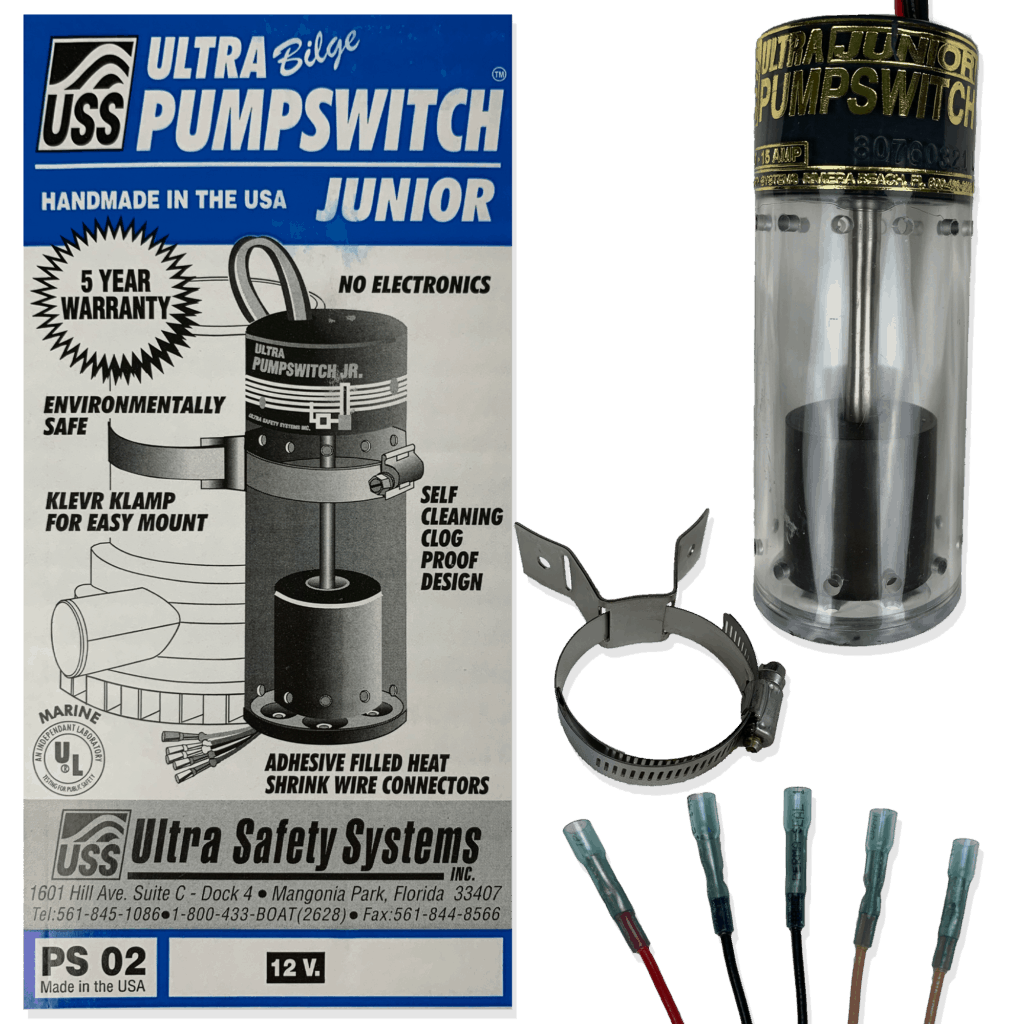I will greatly appreciate the opinion of our experts in our group about wiring a float switch to improve durability.
The most unreliable part in my boat is the RULE automatic float switch for the bilge pump. During the last 18 years I have replaced my floats many times and I have always the concern that during winter water will accumulate and the pump will fail to work. My boat is very dry but nevertheless the bilge pump should always be ready to work to ensure that any water coming during a storm or while sailing will be removed. This time I was determined to find out why the RULE switch does not last, so I open the old switch and I encountered that the switch is poorly made. The switch works by a thin SS plate mounted on the float that acts on a flat section of the small shaft driving the switch on and off. The problem is that the system is always submerged in salt water and the galvanic corrosion soon wears a groove in the small shaft, after that the thin driven plate would not turn the small shaft.
I also discovered that on my boat the switch is connected to the negative side of the battery while every wiring diagram in the web calls for the float switch to be connected to the positive side of the battery. My question is: does any one has a wiring from Hunter showing the polarity of the automatic float? Is it connected to the negative? or to the positive?
The $47 RULE switch is poorly made and could easily be improved if the 2 important parts would be made out of plastic or Teflon and it would be indestructible and much more reliable.
Would the switch connected to the positive side of the battery would minimize the corrosion effect? or would it be the same?
Because mine is connected to the negative, my thought was that a submerged switch connected to the positive could discharge the battery overtime since the switch is located near the SS plates of the keel that is grounded.
I thank you in advance for your comments.
Jorge
Nautica
Kemah, Texas
The most unreliable part in my boat is the RULE automatic float switch for the bilge pump. During the last 18 years I have replaced my floats many times and I have always the concern that during winter water will accumulate and the pump will fail to work. My boat is very dry but nevertheless the bilge pump should always be ready to work to ensure that any water coming during a storm or while sailing will be removed. This time I was determined to find out why the RULE switch does not last, so I open the old switch and I encountered that the switch is poorly made. The switch works by a thin SS plate mounted on the float that acts on a flat section of the small shaft driving the switch on and off. The problem is that the system is always submerged in salt water and the galvanic corrosion soon wears a groove in the small shaft, after that the thin driven plate would not turn the small shaft.
I also discovered that on my boat the switch is connected to the negative side of the battery while every wiring diagram in the web calls for the float switch to be connected to the positive side of the battery. My question is: does any one has a wiring from Hunter showing the polarity of the automatic float? Is it connected to the negative? or to the positive?
The $47 RULE switch is poorly made and could easily be improved if the 2 important parts would be made out of plastic or Teflon and it would be indestructible and much more reliable.
Would the switch connected to the positive side of the battery would minimize the corrosion effect? or would it be the same?
Because mine is connected to the negative, my thought was that a submerged switch connected to the positive could discharge the battery overtime since the switch is located near the SS plates of the keel that is grounded.
I thank you in advance for your comments.
Jorge
Nautica
Kemah, Texas

